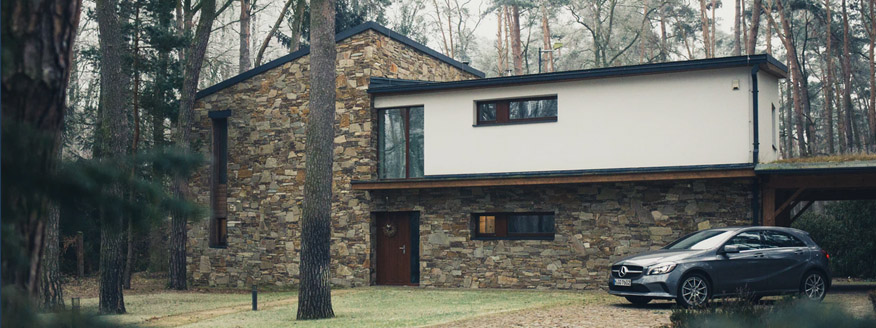If you work from home, it's essential to have a space that's both comfortable and functional. After all, where you'll be spending a lot of time in your home office. Whether you have a dedicated office room, a shared office, or have your "office" in a flexible space, you can set up your office area to:
- help you focus on the task at hand and be more productive
- know where your essential work supplies are located
- be more aesthetically pleasing
With that in mind, here are 13 tips for organizing your home office to streamline working from home.
Break the space into activity centers
Home offices typically have three functions: workspace, occasional work items, and storage. Divide the office into zones that reflect these uses.
The central work zone is the space you will use most frequently and should have furniture and items specific to your primary daily work needs. For example, the desk, main chair, computer connection, webcam, etc. If you need access to many things throughout your workday, you may need a larger desk or a layout like a corner desk or U-shape.
Occasional work items would be files, books, or resources you use and need access to, but not as frequently. This could include a printer, customer files, or office supplies.
The final area is your storage--infrequently used items that are essential but best kept out of the way most of the time. For some, this would be the filing cabinet, spare printing supplies, or archived books. It could include your personal files like your bills and home mail.
Alternatively, if you have a lot of different tasks to do for your work, consider creating separate areas for each one. For example, you could have a space for computer work, another for writing, and another for crafting. In shared office spaces, you could divide into dedicated spaces for each person.
Consider item placement
Take some time to think about where you want to put everything in your home office. The things you need to use the most for your work need to be closest to your main work zone. Items you access less frequently can be kept further away.
For example, if you’re on your webcam frequently, that will need to be on desk. If you print occasionally, keep the printer close to the desk, but not necessarily on the desk. That way it’s accessible when you need it, but you don’t need to extract from a closet to print a document.
Keeping what's less essential further away from your central work area prevents distractions and makes the work space look less cluttered.
Invest in the right furniture
Your furniture selection is probably the most important decision in organizing your home office. It must blend style and function while fitting into your home office space.
Find the furniture that makes sense for your work and the office space size. Not everyone will be content working at a drop-down desk, nor does everyone need a wrap-around deck.
Your specific work guides the purpose of your home office. A financial executive will have different furniture and equipment needs from a freelance graphic designer. Some employees may need to have files close at hand, while others need ample room for several screens. Start with the need, and let the form follow the function.
How will you specifically use the furniture in your office? Some remote workers like having a second, more comfortable chair to sit while on phone calls or brainstorming on their current project. Other home office workers need ample storage for important documents, so expanded filing cabinets might be a must-have. Standing or convertible desks are another popular option to help remote workers add movement into their day.
Make sure you have a comfortable chair to fit your specific work needs. Even if you have a standing desk, you may want a stool to occasionally rest on.
Curate your desk
Your desk is one of the most essential furniture pieces in your home office. It's where you'll be spending most of your time, so it's crucial to make sure it's both functional and visually appealing. Too many items can distract you from your work or make it challenging to find what you need right when you need it most.
Start by decluttering your desk. Remove any unnecessary items and only keep the essentials within reach. Then, add some personal touches to make the space your own. This could include adding a lamp, picture frame, or small plant. Be careful not to overdo your personal accessories. Save others for shelving or hanging on the walls.
Establish paper flow
One of the biggest challenges of working from home is dealing with paper clutter. To stay organized, set up a system for dealing with paper as soon as it comes into your home office. As many people use their workspace to also take care of their personal paperwork like bills or essential records, find a system that manages the flow of both.
Create a designated spot for incoming paper. This could be an inbox on your desk or a specific drawer in your filing cabinet. Then, set up a regular time to review this paper and deal with it accordingly.
To organize the paper, try:
- Creating an inbox you can use to put assignments, bills, letters, and other projects. Do not use it as a permanent paper container. File or trash the papers within a few days. Depending on your work, you might add an outbox to handle paperwork that's finished but still needs to be filed.
- Hanging or buying a file rack to hold current projects
- Have a trash basket, recycling container, and shredder close at hand
- Use a filing cabinet
If the inbox/outbox system is too cluttered for your personal workflow, create multiple piles based on purpose: invoices, bills, to read, personal, etc. Have a designated file for each category.
Adhering to the paper flow is the next step. Once you receive a bill or paperwork, place it in your inbox. It may be put in your file rack of open projects within a day or two. The paperwork is then filed away after completion.
Depending on your company and how long you have to keep records, it should eventually end up in the recycling bin after several years. For documents you need to keep for several years, consider a cardboard filing box to archive prior records. Move to box to the storage area once a new year has begun to make space for new documents.
Get creative with storage
If you're short on space, get creative with your storage solutions. There are ways to store things without taking up too much room. Desk organizers go a long way to preventing clutter and keeping the office streamlined.
For example, go vertical with stacked shelving and filing. You could use wall shelves to store books and other items. Or, invest in a rolling cart to store your printer, files, and other office supplies. Tuck it in a closet when you're not using them; roll it out when you are at work.
Floating shelves can be stacked above a desk in a small office to increase your storage capacity while keeping the workspace clutter-free.
Organize books
If you have many books in your home office, invest in quality shelves or a bookcase. Shelving comes in many styles, so it can add to the look and feel of your home office. Plus, moving books or binders will clear desk space and make it easier to find what you're looking for.
To make your bookshelf look even more organized, try sorting your books by color or size. This creates a visually appealing display. If you'd prefer something easy to navigate based on your specific work needs, create a system around categories or topics.
While organizing, it may be time to remove the books and magazines you don't need or want anymore. Use this time to curate your collection to the essentials to streamline what's on your shelving.
Utilize wall space
Don't let empty walls go to waste! Hang some artwork or decorative shelving to add more storage space. Built-in-shelving or other storage keeps the clutter off the desk, adding to a neat, organized appearance.
Floating shelves or wall art can house family photos or meaningful memorabilia that otherwise would sit on your desk.
Another option is to add a whiteboard, magnetic memo board, or corkboard system to organize your workflow. Make sure your idea or work board is something you'll utilize in your work. Keep it curated. Remove any outdated notes or information.
Curate your accessories
Your home office is a reflection of you and your personal style. Don't be afraid to add some personality to the space! Choose accessories and decor that make you happy and help you stay motivated.
Some ideas include adding plants on the shelves, hanging artwork, or displaying photos of loved ones. Filing systems come in all kinds of styles, so find one that matches your personality. Closed boxes tend to look less messy than wire-frame containers.
Whatever you choose for decor, make sure it doesn't become too cluttered. A few carefully chosen items are better than a lot of random knick-knacks. Keep a minimalist look on your work surface.
Remember your essential items can double as decor. A marble pen tumbler is more attractive than the big box wire brand. Select a creative lamp and shade that matches your style. An antique filing cabinet adds storage and gives the office an executive vibe.
Customize your calendar
A home office is a perfect place to get creative with your calendar. If you find a traditional paper calendar too restrictive, consider using a cork board or dry erase board instead. This way, you can easily adjust your schedule as needed.
Use a cubby/matching bin system
Cubby systems are a great way to keep your home office organized and tidy. They provide a designated space for everything, so there's no more hunting around for things. Plus, a bin matching system gives the office a streamlined look.
If you have open shelving in your home office, it's a nice feature, but it also has to be attractive. Office essentials like hole punchers or conference name tags should be hidden from view. Hide printer supplies or other items in an aesthetically appealing bin or basket. Group items together by category in the baskets for easier locating.
Hide the cords
Cords can be a major eyesore in any home office. Now that we're working from home, we have even more cords--the webcam, speakers, extra monitor, laptop connections, etc. You can easily hide the cords from view with a little creativity.
One option is using cord management solutions like cord clips or organizers. You can keep all the cords tidy and out of sight. Another option is to tuck them behind furniture or use a hiding place like a basket or box.
Make it comfortable
Above all, your home office should be where you feel comfortable spending long hours. Do make sure it's outfitted with everything you need to be productive. This could include a comfy chair, adequate lighting, and noise-canceling headphones.
If you have the space, consider adding a couch or bean bag chair. This way, you can take a break from your desk chair and relax in something more comfortable. And, if you have the budget, upgrade your furniture to ergonomic pieces that will support your body and help you avoid injury.
Organizing your home office
Your home office should be a space that inspires you to be your best self. Following these tips can easily turn it into a haven of productivity and creativity.
If you're looking for a Fort Worth home with an office or office space potential, let the Chicotsky Real Estate Group help. We are invested in helping our clients find the right homes that address all their work, live, and play needs.





